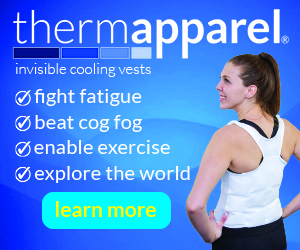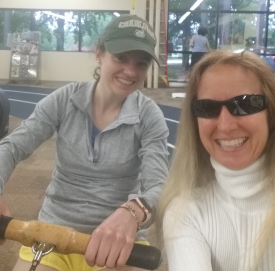Have you ever woken up in the middle of the night with your heart racing, body shaking with tremors, and with night sweats? If you have dysautonomia or another nervous system disorder, you may be facing adrenaline surges. If you thought your sympathetic (flight or fight) nervous system was already maxed out as it is, you were wrong.
Adrenaline surges, or the sudden dumping of adrenaline in your body, can happen at any time of the day with nervous system dysfunctions. For many, however, this happens most while sleeping. I often have triggers with mine: loud music, sound vibrations from movie theaters, after being scared, or even after having what I call an “active dream,” in which, for some reason, I am always doing epic parkcour.
POTS Flare vs. Adrenaline Surge
For people with Postural Orthostatic Tachycardia Syndrome, or POTS, you may be asking yourself how to distinguish between the tachycardia from POTS and the tachycardia from adrenaline surges. The most important question you must ask to answer this question is, “What was I doing right before this happened?”
If you were already in a recumbent position, you felt the tachycardia building quickly, and you felt as if you were having a panic attack minus the mental component (no precipitating anxious thoughts), chances are, you were probably having an adrenaline surge.

It is important to note if you also have tachyarrhythmias, such as supraventricular tachycardia (SVT), as these can also feel similar. However, I find that if I’m having an adrenaline surge, I can feel jittery for hours afterwards, whereas with an SVT, I can recover more quickly.
How Get Rid of That Adrenaline!
A lot of patients use beta blockers and benzodiazepines (i.e. Xanax, Klonopin, Ativan) to help with adrenaline surges. If you use these medications but aren’t finding enough relief or cannot tolerate these medications, here are some tips to dealing with adrenaline surges:
1. Exercise

Prevention is key, right? I have found that having a consistent physical therapy schedule really helps with preventing adrenaline build up in my body. Many POTS doctors recommend exercise as a therapy for POTS and I absolutely love the Levine/Dallas Protocol. Even if I am feeling like complete rubbish, I still try and get on my pedaler. It is easier than the recumbent bike and you can do it at home.
After months working on the Levine protocol, I am absolutely sold that exercise is just as important as medication for POTS treatment. Now, I almost always feel better after exercise. It did take months to feel this way, but it is so worth it!
2. Finding Triggers
Your body is going to try and find any excuse to dump adrenaline. If you can find out what some of your triggers are, you may find a decrease in the number of surges you experience.
Some common triggers for me:
- MCAS reactions
- Loud noises
- Highly emotional environments
- Sudden stressful situations (i.e. test taking, interviews, sudden bad phone calls, having an argument, calling health insurance companies, etc)
- Bright lights (i.e. grocery stores, gyms, schools)
- Stimulants (i.e. caffeine, sugar, other medications)
- Dehydration
- Nightmares/bad dreams
- Overexerting your exercise/standing tolerance
- Fatigue
- Blood sugar fluctuations
3. Modifying Triggers
I wish that I could live in an environment that won’t disrupt my body’s delicate and temperamental homeostasis, but of course, that would just be too easy. So, I have come up with some tricks to help modify my environment that reduces the severity of my triggers. Because I cannot tolerate beta blockers and do not use benzos, my treatment for adrenaline surges are primarily lifestyle changes.

Some adrenaline hacks I use:
- Controlling my histamine through antihistamines (MCAS treatment)
- Using ear plugs in movie theaters, at concerts, or during storms
- Use deep breathing techniques and heart rate variability training to help calm my system after emotional and stressful situations
- Use sunglasses indoors and in movie theaters to reduce glare and fluorescent light stimulation
- Avoid caffeine and sugar
- Keep well hydrated and avoid overheating
- Sleep with a weighted blanket to reduce sympathetic activity while sleeping
- Not overexerting myself past what I do with the Levine Protocol.
- I almost never nap or lay horizontal during the day, but I make sure to get regular sleep every night (my usual 6.5 hours–I have insomnia)
- Avoid eating meals with a lot of starchy carbs and sugars
- Use a magnesium supplement
4. Do Not Panic
When you are in the middle of an adrenaline surge, one of the worst things you can do for it is add more stress to your body by panicking. It has taken me a long time to somewhat “be OK” with surges when they happen. But, even though they are scary, try your best to lay down somewhere that is cool, dark, and quiet to wait it out. Drink fluids and take meds if you need to, but the best thing you can do to help yourself is to wait patiently. I would try deep breathing, listening to calm music, or even an audiobook as a distraction.
5. Vagal Maneuvers
If you find that nothing is working and you have a history of arrhythmias, you may want to try to terminate the arrhythmia using vagal maneuvers. If you do not have a history of arrhythmias, talk to your doctor about using vagal maneuvers as a tool to help lower your heart rate during surges. I typically start trying these when my heart rate is over 140/150 laying down (which usually for me means I’m having an SVT). This is NOT a tool for when you have tachycardia upon standing, aka just normal ol’ annoying POTS.
NOTE: Do NOT try vagal maneuvers without first discussing them with your physician. If you have a history of arrhythmias, your cardiologist has probably shared particular ones with you to try to terminate the arrhythmia at home. In particular, do not try the carotid massage or dunking your face in ice water without discussing it with your physician. These can cause stroke and cardiac arrest if not done properly.


Hello, people. I want to to ask if anyone has tried the supplement Magnesium L-Threonate. I bought it to improve my concentration, but I find if can sometimes trigger tachycardia… Do you have any experience with different magnesium supplements and any ideas as to what works best? Thanks 🙂
LikeLike
Hi Alex! I use MagCitrate from Designs For Health. I really like it and it’s a powder. Sometimes I’ve found that random things can cause tachycardia so you might just have to test different types, but I’d ask your doctor if they have any more suggestions.
Thanks for the read!
LikeLike
Thank you for this brilliant article about adrenaline surges. In addition to all the wonderful information, I really appreciate your kind, calm, direct tone. So much of this ‘rainbow zebra’ life with multiple chronic illnesses is navigating the mental health challenges, and your page arrived in my search results at just the right moment. You have made my world a better place today and that is no small thing.
LikeLike
I have been having adrenaline surges during the day and at night while trying to fall asleep. Just as I drift off I get a surge and it wakes me up. This sometimes goes on all night long. I am on a beta blocker and just recently started amitripoline. There are times that I don’t get them and I am fine. But when I do get them it leaves me with an anxious feeling inside me. I can’t control these. They just come on without warning. Any suggestions would be helpful. I have not been diagnosed with POTS. My doctor doesn’t think I have it.
LikeLike
This is a great article. One of the best ones I have found regarding adrenaline surges. I have dysautonomia POTS and just last night had a surge. It’s so scary in the moment and I think it just makes it worse to become anxious. Have you read anything regarding the seriousness of adrenaline surges? I think the anxiety comes from not knowing in the moment whether or not it’s something more serious. Like if we could all just know that we’re going to be fine, then I think it would be easier to wait it out.
LikeLike
I have a whole lot of chronic pain and since nobody can get pain management these days (aside from 3 meds that rarely work and have dangerous side effects) my HPA axis is under constant stimulation from pain. This floods my body with stress hormones. Pain is worse at night normally, and that means Norepinephrine, epinephrine and cortisol soar when I need to be sleeping. And there are no good physical positions when you have several forms of neuropathy, cancer of the bone marrow, FMS, CFS and a bunch of other issues.
I fail to sleep because of what pain does to people. No amount of medication (etc) will change this. The problem exists because untreated chronic pain causes continual stimulation of the HPA axis,m and the result is pretty much the same as having complex PTSD.
LikeLike
Reblogged this on Pink Salt Collective and commented:
This post made SO MUCH sense to me! I was having this experience of what felt like adrenaline surges at night with POTS- rapid heart rate, sweating, shaking, etc. Thank you for validating that POTS adrenaline surge is a thing!
LikeLike